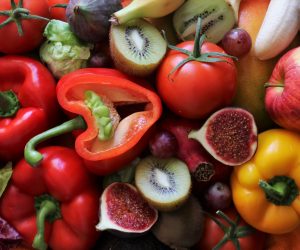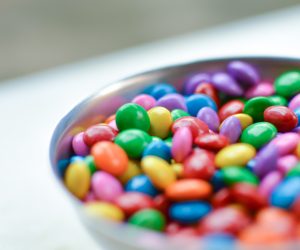
What Is the Best Food for Gingivitis and Periodontal Disease?
Michael Greger M.D. FACLM via Nutrition Facts – What would happen if you stopped brushing your teeth but ate more healthfully?
Experimentally, when study participants stop brushing their teeth, plaque starts to build up and, within a few days, their gums start to get inflamed. Though nothing may be visible just yet, if you take a biopsy at the gum line, you can see the inflammation beginning to spread. Within a few weeks, overt gingivitis becomes apparent with gums that can get red and swollen and bleed easily. If you don’t do anything about it, you can develop periodontal disease, where the inflammation creeps down into the supporting structures of the tooth—the bone and ligaments—setting you up for tooth loss.
How did we get along for millions of years without brushing our teeth? “Dental disease is almost universal” these days, but skulls from thousands of years before the invention of the toothbrush have perfect teeth. Admittedly, that was also thousands of years before the invention of candy bars. Does food play a role? You don’t know…until you put it to the test, as I discuss in my video Best Food for Periodontal Disease and Gingivitis.
How do you get people to stop brushing their teeth and also stop eating processed junk? Researchers designed a study where participants were forced to live under Stone Age conditions without “toothbrushes, toothpaste, dental floss, toothpicks, or other oral hygiene products” for a month, and “security guards ensured that all subjects maintained the appropriate lifestyle for Stone Age humans.” They could use a twig or other natural material to try to clean their teeth, but were pretty much on their own. (The participants didn’t get any candy bars either.) The researchers were attempting to replicate the diet from about 4000 BCE, so the subjects got a lot of whole grains with supplemental “salt, herbs, honey, milk, and meat from domestic animals (goats and hens),” and were allowed to pick berries or see what they could catch. What happened?
With no oral hygiene, their plaque built up, as you can see in the graph below and at 1:53 in my video, but their gums got healthier, as measured by bleeding on probing. (Gums bleeding when poked with a dental tool is a measure of gingivitis.) In almost every case, the participants’ gum health improved. How is it possible that their gums were actually healthier despite buildup of plaque? Many of the more disease-causing bacteria seemed to have disappeared from their mouths. The researchers suggested this could be from the lack of refined sugars, but the participants were eating honey, so they weren’t on a sugar-free diet. They were, however, eating a lot of whole grains and berries rich in antioxidant phytonutrients with anti-inflammatory properties. So, maybe it was restricted sugar intake combined with the intake of really healthy foods. Thus, all of those experimental studies where people stop brushing their teeth and their gums inevitably get inflamed “may only be applicable if the subjects maintain a Western diet rich in sugar and low in anti-inflammatory foods,” such as whole plant foods.

What about the role of nutrition in periodontal health? Gingivitis can lead to periodontitis, an inflammatory disease of the supporting tissues of the teeth, which, if left untreated, can lead to the progressive loss of the bone that holds our teeth in place. Part of the development of periodontal disease may involve oxidative stress, so not only do we need to reduce our intake of pro-inflammatory foods, such as refined carbohydrates and saturated fats, but it may also help if we seek out foods that are antioxidant-rich.
Is there an association between periodontitis and dietary vitamin C intake? Apparently so, as you can see in the graph below and at 3:34 in my video. Increased risk of periodontitis has been associated with lower levels of vitamin C intake. What effect might vitamin C depletion and supplementation have on periodontal health? Researchers provided controlled amounts of vitamin C to study participants for three months and found that measures of gum inflammation were directly related to the subjects’ vitamin C status. On about one orange’s worth of vitamin C a day, their gums improved; down around only 5 mg a day, though, their gums got worse. On ten oranges’ worth of vitamin C a day, they got better and then worse once again when the vitamin C level dropped down to five oranges’ worth, as you can see in the graph below and at 4:01 in my video. The study was pretty convincing, though 5 mg a day is down at scurvy level. We know our gums start bleeding and our teeth can fall out if we have scurvy, but that doesn’t mean taking extra vitamin C helps.
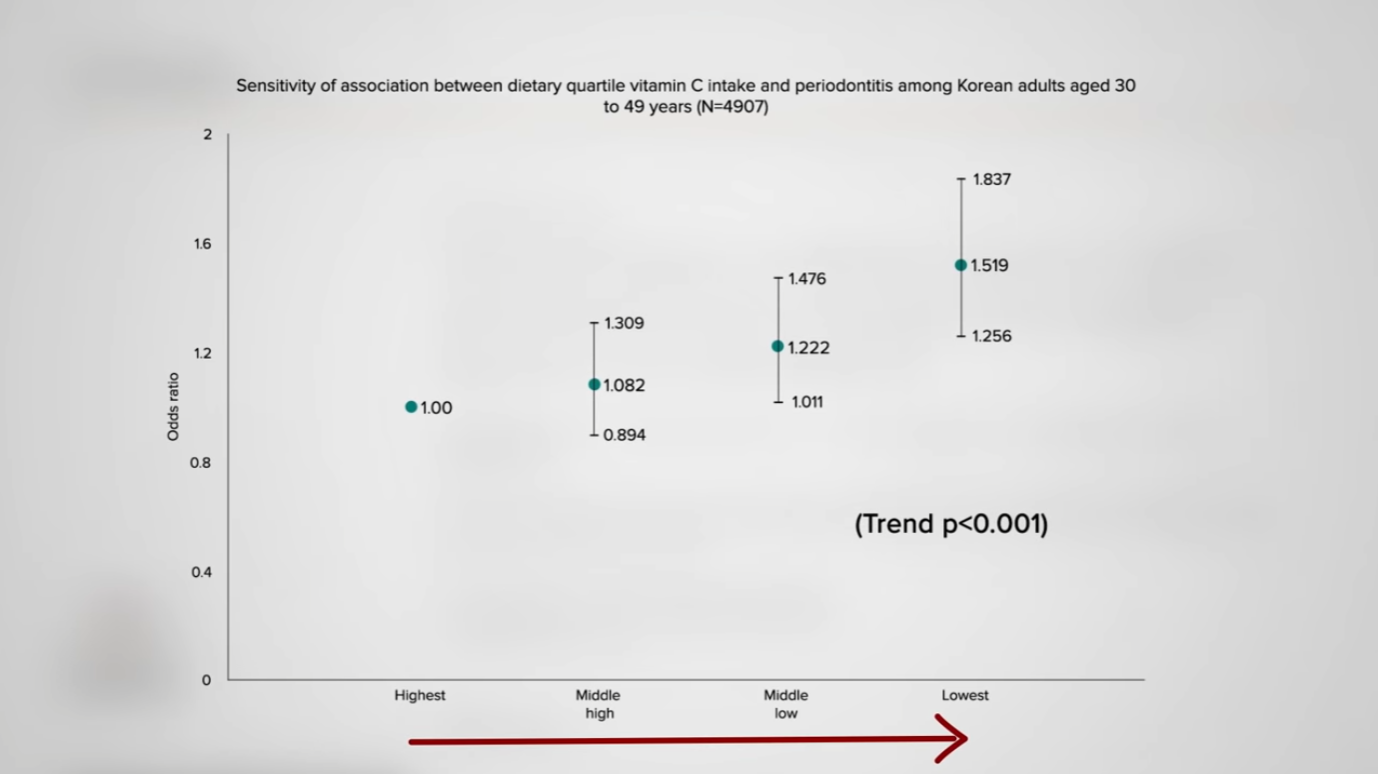
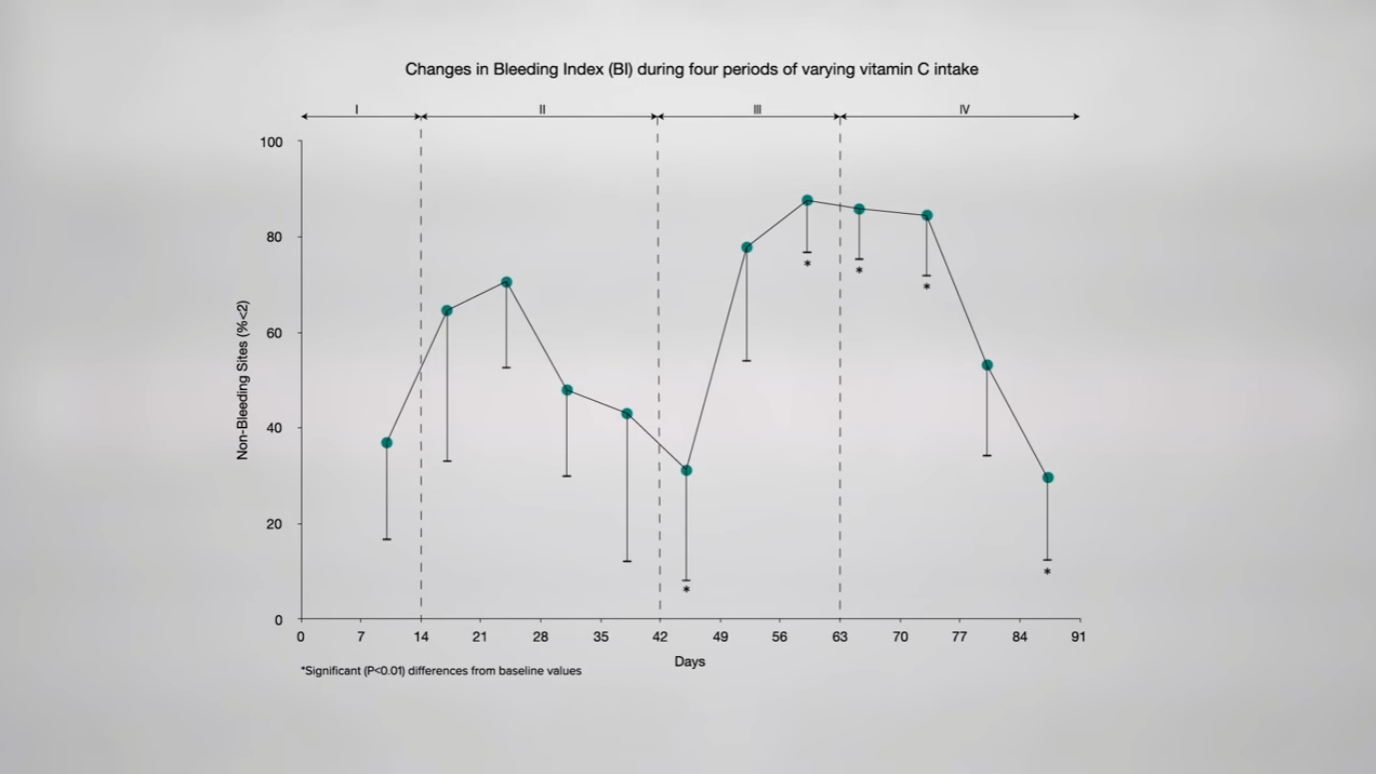
Indeed, 1,500 mg of vitamin C a day did not seem to help prevent gingivitis and even 2,000 mg a day failed to help periodontitis sufferers. Is it possible that vitamin C is just too weak an antioxidant? What about lycopene, the powerful antioxidant pigment that makes tomatoes red? Lycopene worked! But that was from injecting it directly into the gum pocket with a syringe. Does it still work if you simply eat it?
A randomized, placebo-controlled, clinical trial investigated the efficacy of lycopene in the treatment of gingivitis. After two weeks of standard dental treatment with either a single daily tomato’s worth of lycopene or placebo, the placebo group had a 10 to 20 percent reduction in gingivitis, but the lycopene group had a nearly 30 percent improvement within just one week. How much lycopene? The amount found in just one and a half teaspoons of tomato paste a day. So, tomatoes may help with gingivitis, but what about periodontitis?
Another randomized, double-blind, placebo-controlled trial again treated subjects with a typical dental cleaning plus either one daily tomato’s worth of lycopene or a placebo for two months. Researchers found significant improvements in the lycopene group in plaque, gingivitis, and bleeding, though not probe pocket depth and clinical attachment. You can see the difference in how much better their gums looked as you can see below and at 5:59 in my video. The researchers concluded that “supplementation with lycopene seems to have augmented the healing sequence of inflamed gingival tissues,” but that was with a whole tomato’s worth a day. How about half a tomato’s worth or just three quarters of a teaspoon of tomato paste’s worth of lycopene a day? Neither worked. There was no difference. It looks like you have to go the whole tomato.
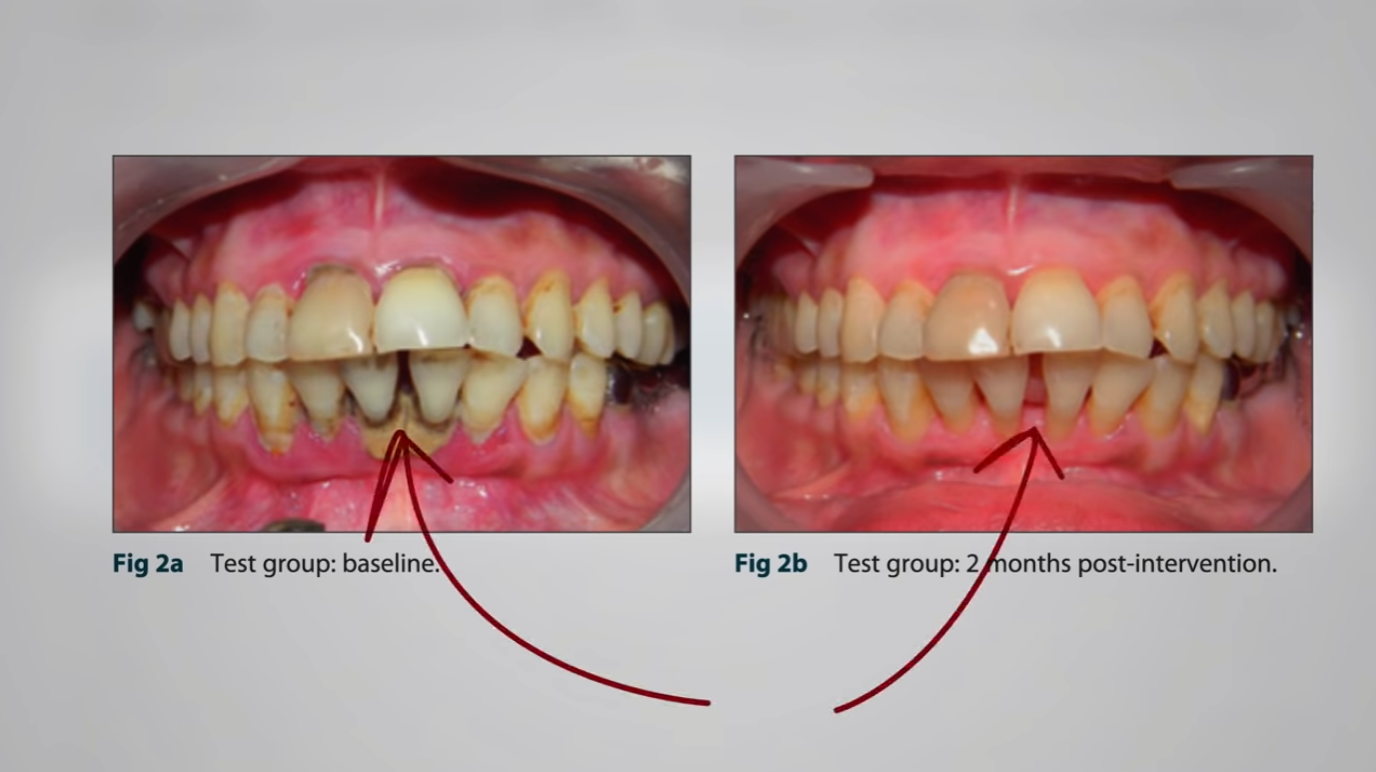
It should come as no surprise that healthy foods can benefit all parts of the body, but I still love to see the data!
I talk more about the red pigment in tomatoes in Lycopene Supplements vs. Prostate Cancer and Tomato Sauce vs. Prostate Cancer.
Key Takeaways
- Although dental disease is nearly universal today, skulls from thousands of years before the toothbrush was invented have perfect teeth
- Researchers had study participants live under Stone Age conditions for a month without any oral hygiene products, though they could use twigs or other natural materials to clean their teeth. Dietarily, they were given whole grains with “salt, herbs, honey, milk, and meat from domestic animals (goats and hens),” and could pick berries or see what they could catch, in an attempt to replicate the diet from about 4000 BCE.
- Without oral hygiene, the subjects’ plaque built up, but their gums got healthier. Much of the disease-causing bacteria seemed to have disappeared from their mouths, thought perhaps because they were not consuming refined sugars and were consuming a lot of antioxidant- and anti-inflammatory-rich whole grain and berries.
- Development of periodontal disease may involve oxidative stress, so we should reduce consumption of pro-inflammatory foods like refined carbs and saturated fats, while also increasing intake of antioxidant-rich foods.
- Increased risk of periodontitis has been linked to lower levels of vitamin C intake, but 1,500 daily mg of vitamin C did not seem to help prevent gingivitis and 2,000 daily mg didn’t help periodontitis sufferers. Lycopene, the antioxidant pigment that makes tomatoes red, did work, however.
- Researchers found that one daily tomato’s worth of lycopene may help with gingivitis, plaque, and bleeding, but not probe pocket depth and clinical attachment.
To read the original article click here.




